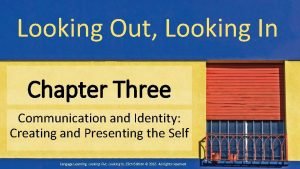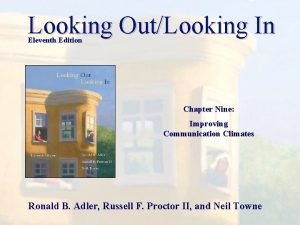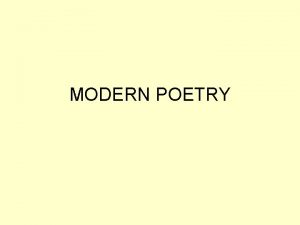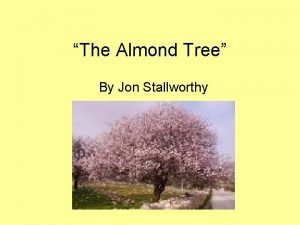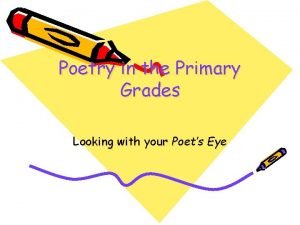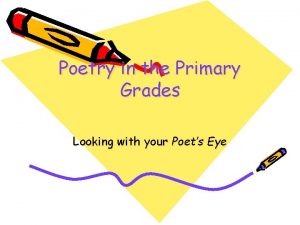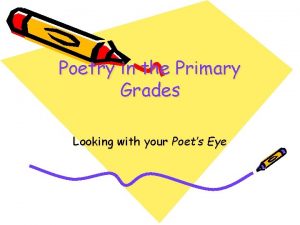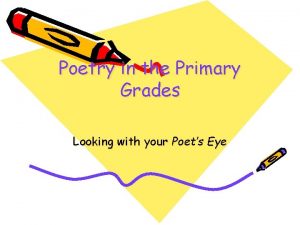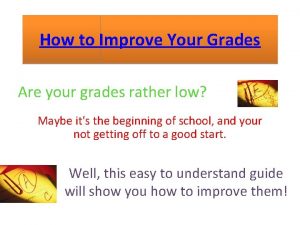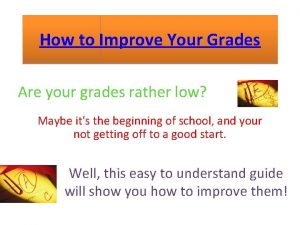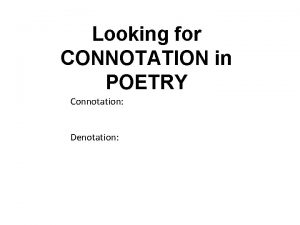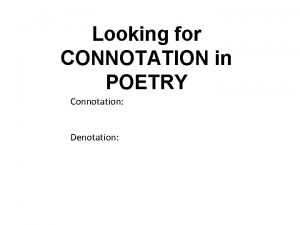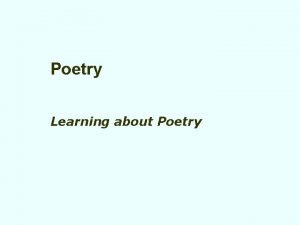Poetry in the Primary Grades Looking with your
















- Slides: 16

Poetry in the Primary Grades Looking with your Poet’s Eye

Things by Eloise Greenfield Went to the corner Walked in the store Bought me some candy Ain’t got it no more Went to the beach Played on the shore Built me a sandhouse Ain’t got it no more Went to the kitchen Lay down on the floor Made me a poem Still got it

R. Andre Calderon - 1 st Grade Bilingual 4 1/2 years in HISD Gross Elementary Demographics: 63% African American 25% Hispanic Native American and Asian/Pacific Islander 4% Caucasian 8%

TAKS and • 4. W 1. 415. A Write to express, develop, reflect on ideas and to problem solve. TEKS • 1. 2 e Write for personal or creative expression and reflection.

Poetry is the boullion cube of literature.

TAKS and • 4. W 1. 415. E Exhibit an identifiable voice in personal narratives and in stories TEKS • 1. 2 g Write with a variety of literary devices. Define and provide examples of and use these strategies in authentic forms.

Literary Devices used in Poetry • • Alliteration Figures of speech (hyperbole, simile) Description Imagery Onomatopoeia Rhyme rhythm

Theory • “In the K-1 classroom, children convey their meaning more easily though drawing than through print. Drawing, therefore, can provide a supportive scaffolding for the writing. Because more information is embedded in the pictures than in the print, drawing provides a horizon and leads the child deeper into the writing. In a sense the goal in the primary classroom is to have writing catch up with their drawing. ” -Lucy Calkins

Theory from Calkins’ “Art of Teaching Writing” • Poetry is also a powerful genre because its condensed nature. Because poems can be very short, every child in every classroom can be a poet. The genre is accessible even to five year old writers who labor over the mechanics of putting pen to paper. • Poetry offers a powerful forum for teaching young writers to make reading-writing connections. When students read Judy Blume novels, it’s not easy for them to match their writing to their reading, but when they read an Eloise Greenfield poem, reading-writing connections feel far more possible.

More Theory by Calkins • Poetry is powerful because of the ways it can enrich people’s lived lives. Poems can be read aloud at Thanksgiving dinner or at a baby’s baptism. Poems can be put onto greeting cards or framed and given as gifts. Poems can also be woven into the life of a classroom communityposted next to the aquarium, chanted as a ritualized opening to every day’s math class, hung on the classroom door as a motto for the community.

“Of course, it is true for the writer as for the jeweler and the sculptor that the magic is never in the material alone, but in the artist’s ability to reimagine it. ” -L. Calkins

Lesson Looking with your Poet’s Eyes!

Asparagus by Valerie Worth Like a nest Of snakes Awakened, craning Long necked Out of the Ground: to stand With sharp Scaly heads Alert, tasting The air Taking the sun Looking around

Apple by Nan Fry At the center, a dark star Wrapped in white When you bite, listen For the crunch of boots on snow Snow that has ripened. Over it Stretches the starry sky.

Modifications • For learning challenged: Work in small group or one on one to orally describe objects before writing. • For ESL: Provide manipulatives and physical, tangible examples of descriptions to help with comprehension.

Bibliography • Calkins, Lucy (1994) The Art of Teaching Writing. Heinemann, Portsmouth, NH. • Fletcher, R. (1993). What a Writer Needs. Heineman, Portsmouth, NH. • Ryan, M. (1996) How to Write a Poem. Grolier, Danbury, CT.
 Breadth of penetration
Breadth of penetration Looking out looking in chapter 9
Looking out looking in chapter 9 Activity 1 look up look down
Activity 1 look up look down Give us your hungry your tired your poor
Give us your hungry your tired your poor Cavalier poetry definition
Cavalier poetry definition Traditional poetry vs modern poetry
Traditional poetry vs modern poetry Famous lyric poems
Famous lyric poems Augustan age characteristics
Augustan age characteristics The almond tree poem
The almond tree poem Hình ảnh bộ gõ cơ thể búng tay
Hình ảnh bộ gõ cơ thể búng tay Slidetodoc
Slidetodoc Bổ thể
Bổ thể Tỉ lệ cơ thể trẻ em
Tỉ lệ cơ thể trẻ em Voi kéo gỗ như thế nào
Voi kéo gỗ như thế nào Glasgow thang điểm
Glasgow thang điểm Chúa sống lại
Chúa sống lại Môn thể thao bắt đầu bằng chữ đua
Môn thể thao bắt đầu bằng chữ đua
